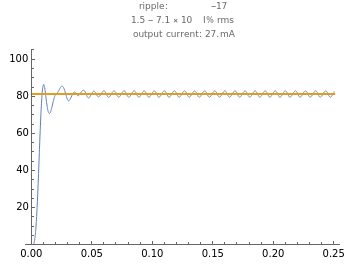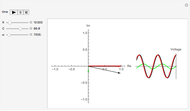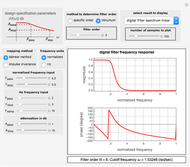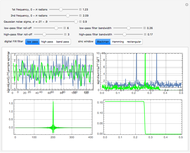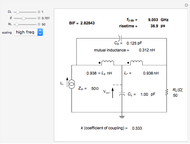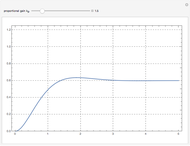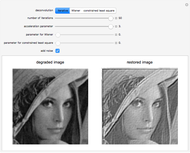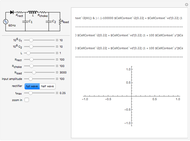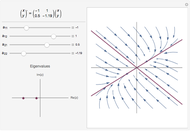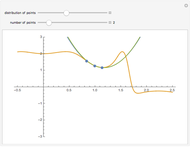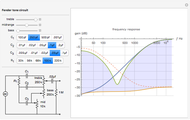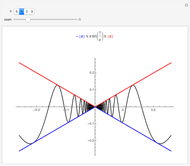Pi Filter

Requires a Wolfram Notebook System
Interact on desktop, mobile and cloud with the free Wolfram Player or other Wolfram Language products.
A pi filter is used to attenuate noise in power and signal lines. This Demonstration shows the output voltage from a DC power supply with a pi filter, which consists of an inductor (choke) between a pair of capacitors, as shown in the schematic in the upper-left corner. You can vary all the component values, including load resistance and internal resistances of the rectifier/input supply and the choke.
Contributed by: Selwyn Hollis (March 2011)
Open content licensed under CC BY-NC-SA
Snapshots
Details
The plotted output voltage is computed by solving the system of three differential equations from applying Kirchhoff’s voltage law to each of the three loops of the circuit. We have in mind the high-voltage, low-current application in vacuum-tube audio amplifiers.
The voltage-current characteristic of the rectifier (the function  in the program) is typical of a solid-state diode; however, the parameter
in the program) is typical of a solid-state diode; however, the parameter  allows the inclusion of significant internal resistance typical of a vacuum-tube rectifier. The rectifier provides half-wave rectification; we can mimic full-wave rectification by using a full-wave rectified input voltage.
allows the inclusion of significant internal resistance typical of a vacuum-tube rectifier. The rectifier provides half-wave rectification; we can mimic full-wave rectification by using a full-wave rectified input voltage.
Ripple amplitude (rms) is computed and reported as a percentage of the mean output voltage. This is done by sampling over the last several computed cycles. For large inductance values, transient low-frequency "ringing" causes difficulties in the computation of the ripple amplitude. We attempt to remove the ringing using the Fourier transform. While this improves matters considerably, one should increase the  parameter in order to obtain more accurate ripple amplitude calculation for large inductance values. (Unfortunately, the additional computation will cause the controls to become less responsive.)
parameter in order to obtain more accurate ripple amplitude calculation for large inductance values. (Unfortunately, the additional computation will cause the controls to become less responsive.)
An input amplitude control is provided for convenience. Input amplitude is 1/2 peak-to-peak, or  rms.
rms.
Permanent Citation

